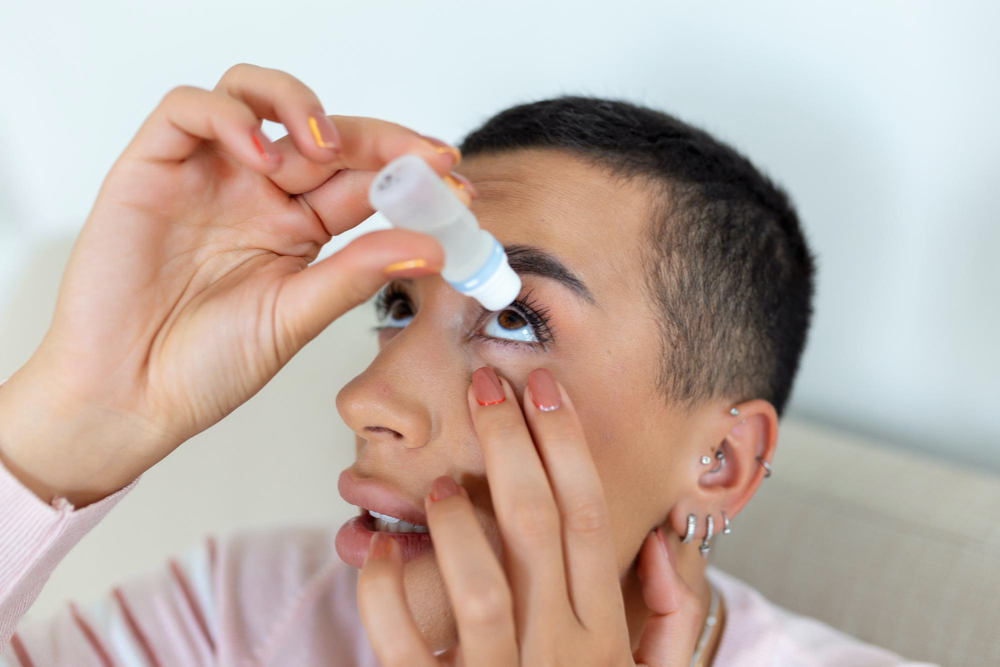- Fast results
- 4,000+ locations
- 4.8 star rating
Need Help? (888) GET LABS


The information in this article is not intended to replace professional medical advice, diagnosis, or treatment. Instead, consult your physician or any licensed healthcare providers if you have questions.
Periorbital cellulitis is an eye infection that causes inflammation and discoloration in the skin surrounding the eye, including the eyelid. Unlike pink eye or conjunctivitis, periorbital cellulitis is not contagious. However, treating the condition typically requires antibiotics. Therefore, it’s best to consult your doctor to adequately address the infection and prevent it from spreading further inside the eye.
If you have been diagnosed with periorbital cellulitis, it’s essential to understand that the condition is not life-threatening and can be cured through medications. However, if you don’t follow the prescribed treatment by your doctor, the infection can worsen and affect the inner muscles and fats of the eye. In this case, your risk of permanent vision loss and sepsis (blood infection) increases drastically.
Furthermore, the infection may continue damaging the intracranial structure, including the brain. Meningitis, the inflammation of the membranes and fluid surrounding the brain and spinal cord, can come from untreated periorbital cellulitis. Caused by bacteria or viruses, meningitis can lead to memory loss, speech problems, hearing loss, and even death.
To address periorbital cellulitis promptly, it’s best to recognize the physical signs. Cellulitis eye symptoms, specifically affecting the periorbital tissues, include bulging and redness or discoloration of the eyelids and the skin around the eye. These could extend to the eye’s white area and often develop without pain.
| Did You Know? Periorbital cellulitis differs from orbital cellulitis in that it affects the outer area of the septum, including the superficial part of the eyelid and the skin circling the eye. In contrast, orbital cellulitis affects the eyeball, including the nerves and tissues in the socket. It’s much more severe and often a complication of periorbital cellulitis. |
Bacterial infection often triggers periorbital cellulitis. It can occur to anyone vulnerable or has an entry point for the pathogen (disease-causing microbe) near the eye. The following situations can increase your risk of developing periorbital cellulitis.
If you have a break in the skin surrounding your eye, you should be careful not to aggravate and contaminate it. Otherwise, it could trigger the infection, leading to cellulitis. This skin injury can be a small cut, insect bite, pierce, or scape.
When sinus infections are not addressed, they can spread toward the eye, causing periorbital cellulitis. Therefore, you must consult your doctor if symptoms like runny nose, post-nasal drip, sore throat, headache, and facial pain prolong despite the remedies and medications.
Infections in the gums and teeth can also extend to the eye if not treated properly. Make sure to seek medical intervention if you experience dental problems to eliminate the causative bacteria and virus.
How strong your immune system is can also impact your susceptibility to cellulitis in the eye. Several medical conditions can weaken your immunity, most notably HIV infection. Nonetheless, you can protect your immune system with early diagnosis and by working closely with your doctor to manage the condition.
The primary treatment for periorbital cellulitis is antibiotics, which can be administered orally, by injection, or through a vein (intravenously). Which antibiotic to take depends on the type and severity of its effect. Your doctor will determine the medication, dosage, and length of treatment.
| Did You Know? A complete blood count (CBC) confirms the presence of foreign or disease-causing agents in the body. Hence, this is also a test commonly requested by healthcare providers for infections and, by extension, to verify cellulitis by the eye. |

You can lower your risk of cellulitis by the eye by being mindful of your hygiene and immune system. Although not life-threatening, the mortality rate from complications related to periorbital cellulitis is still between 5% and 25% – which is why it’s better to prevent eye infections than seek a cure. With that said, here are proactive steps to avoid periorbital cellulitis.
Personal cleanliness protects you from microbes that cause disease – and, of course, this includes eye infections. Make sure to practice hand washing using warm water and soap to get rid of germs that could transfer or come in contact with your face and eyes.
People with contact lenses are more likely to get infections, especially if you don’t follow proper lens care. If you wear contact lenses, be mindful of how often you should replace them. For example, regular disposable contact lenses should be discarded every two weeks. Also, do not forget to disinfect them and wash your hands thoroughly when applying them to your eyes.
Touching or rubbing your eyes can also lead to infections, especially if your eyes are already irritated, and your hands are not exactly clean. While it’s almost instinctive to rub one’s eyes, this is a habit you should cut off to protect yourself from eye infections.
If you have a wound near your eye, employ proper care by cleaning the affected area with water and soap gently. Don’t scrub the wound, as it could cause further damage.
Apply an antibiotic ointment to the wound after it has been cleaned. Use an ointment that your healthcare provider has prescribed. Then, put a sterile dressing or bandage over the wound. This will help prevent the spread of bacteria and promote faster healing.
It’s hard to ignore dental problems as they often come with an unshakeable pain. Nonetheless, another good reason to respond quickly to dental infections and see a dentist is the elevated risk it imposes for periorbital cellulitis. Be sure to follow your dentist’s prescribed medication, dosage, and intake length. Plus, don’t miss the post-treatment consultation to confirm infection clearance.
Aside from detecting diseases that weaken your immune system, you can protect and strengthen your immunity by getting enough sleep, exercising regularly, and keeping a healthy diet. Make sure to include foods that boost immunity, such as those rich in vitamin C.
Vaccination and immunization can significantly reduce the risk of periorbital cellulitis. For example, pneumococcal and Haemophilus influenzae type b (Hib) vaccines can prevent periorbital cellulitis caused by bacterial infections. Consult with your healthcare professional to identify which vaccines are recommended for you based on your age and medical history.
Learn more about keeping yourself safe from periorbital cellulitis by understanding the key steps to infection prevention. Keep in mind that your risk of developing cellulitis by the eye is directly correlated with your susceptibility to infections.
You don’t typically need to visit the emergency room if you experience periorbital cellulitis. Although the swelling and redness can be prominent, the condition is commonly painless. Hence, it shouldn’t disrupt your regular activities. However, if the condition worsens and you experience complications like vision loss and bleeding, don’t hesitate to seek immediate medical treatment.
Periorbital cellulitis does not go away on its own and can exacerbate and turn into orbital cellulitis, affecting the tissues around and beyond the eye socket. This serious infection can cause blindness and extreme tissue damage, leading to gangrene. Nonetheless, you can avoid all of these with the right antibiotics prescribed by your primary healthcare provider.
When medicated, periorbital cellulitis usually lasts between seven to ten days. However, other factors may extend or shorten this time frame. For example, the severity of the cellulitis may influence the interaction between the bacteria causing the infection and the antibiotic.
While you can say that periorbital cellulitis is not as serious as conjunctivitis and the rare orbital cellulitis, it doesn’t diminish the fact that you need to seek immediate medical guidance from your doctor; otherwise, this simple infection can spread in the eye area, and lead to severe conditions, including blindness. Check with your doctor and continue practicing proper hygiene and wound care around your eyes to lower your risk of infections.


We now offer pharmacy discounts through our PersonalabsRx platform.
We now offer pharmacy discounts through our PersonalabsRx platform.